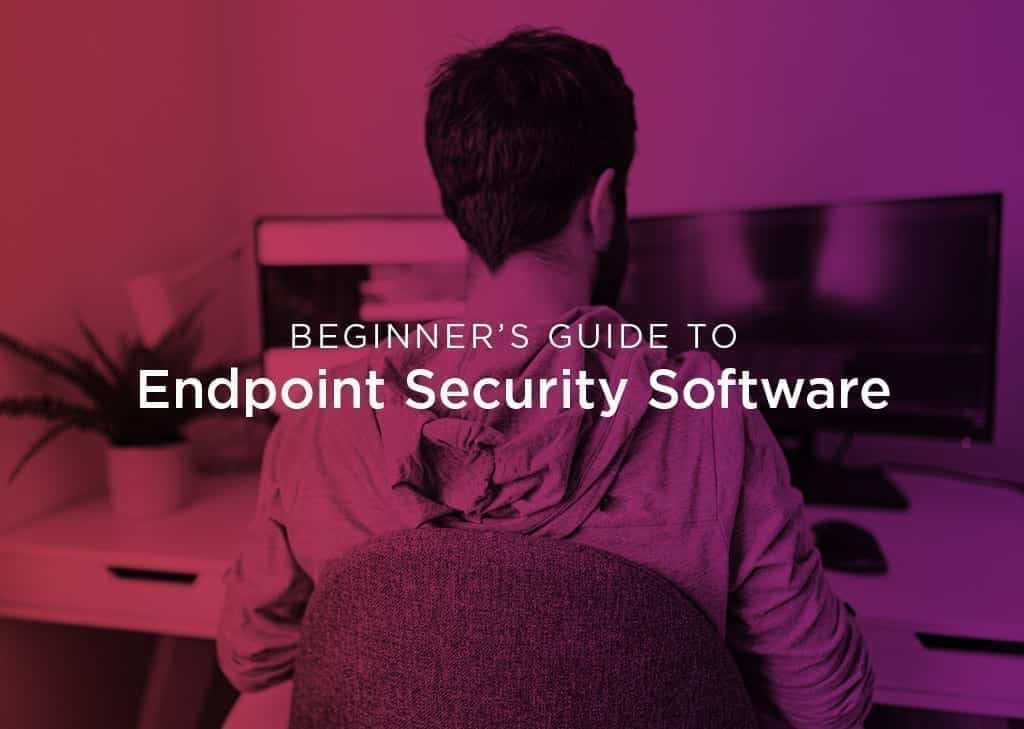
Beginner’s Guide To Endpoint Security Software
In 2018, 62% of businesses experienced a cyber attack, and in the first half of 2019 data breaches exposed 4.1 billion records.
We know that cybersecurity is a problem, but often we don’t know what to do about it, and unfortunately, the statistics show that the vast majority of companies are not prepared for attacks.
And the cause is that most businesses simply don’t know what to do to counter the cyberattacks. The answer is endpoint security.
What is Endpoint Security?
Endpoint security, as the name suggests, refers to securing endpoints. What are endpoints? They are end-user devices, such as computers, laptops, tablets, phones–even smart watches. Any computer that someone uses, no matter how small it may appear, is susceptible to attack and must be secured.
Endpoint security software is used by businesses, as opposed to individuals and homes who generally just use an antivirus software. The difference between a home’s antivirus software and a businesses endpoint security is big, but the main and critical difference is that endpoint security software secures an entire network, with all of that network’s endpoints responding in unison, via the cloud, rather than independently.
What Does Endpoint Security Software Do?
When a threat is detected, the endpoint’s user is notified and the software kicks into gear, activating its automatic protective measures. Some of these capabilities include, but are not limited to, antivirus management, integrated firewalls, network access control, whitelisting, intrusion detection and response, and root cause analysis.
The faster a security software is able to counter a threat and begin remediation, the lower the chances are that the threat will both spread and expose more breaches. It lowers the risk of downtime, which lowers the cost of the attack.
What Threats Does Endpoint Security Software Address?
Phishing
Phishing is one of the most common types of cyberattack. The attacker pretends to be someone or something else, trying to get the user to click on a malicious link or enter sensitive data.
For example, a phishing attack may send an email that appears to be from a company you trust, giving you a link to go to their website and login–but the email and website are fake, and by entering your login information you are handing over your login and password to the attacker. This type of attack has been used successfully to get access to corporate computers, to bank accounts, to email accounts, and much more.
Ransomware
Ransomware is an attack that targets the endpoint user’s files on their computer, encrypting them. Once the files have been encrypted, the user will get a ransom demand that they either pay a certain amount to regain access to their files, or the files will forever be lost. Often, these cyberattackers demand payment in the form of cryptocurrency like Bitcoin.
Data Theft
Perhaps the type of attack that gets the most news attention is data theft, where a cyberattacker will enter a user’s system and access data that belongs to the business. Often this data is customer data, including names, personal information, and payment information.
By doing this, the thieves can steal identities as well as sell the credit card or bank account numbers. These types of attack make the news because they impact so many people–often hundreds of millions of customers, such as in the Yahoo! breach, or the Equifax breach.
What’s the Difference Between Anti-Virus Software and Endpoint Security Software?
The main difference between anti-virus software and endpoint security software is in its scope. Anti-virus software will protect from many of the same things that endpoint security software does, but anti-virus software merely protects a single computer from these threats, its automated services locking down the computer and trying to isolate the problem.
While the anti-virus software may connect online to its company, like Norton or Kaspersky, and get information about the attack from them, it only solves the problem on that specific device.
Endpoint security software, on the other hand, protects the entire network, immediately going into defensive mode to find other malware and viruses. When one endpoint device is compromised, all of the devices are inspected.
Another difference is that endpoint security software is not necessarily installed on every computer, but is software attached to the network, whereas antivirus software is installed on each machine.
What Makes Endpoint Security Software So Important?
Endpoint security software is so important because businesses and organizations are under attack more than they ever have been before. Since 2014, security breaches have increased by 67%, and the average cost of a data breach is $3.92 million.Some of the most notable breaches have been incredibly costly, such as the Equifax breach in 2017, which affected 147 million consumers and cost the company $4 billion.
And lest it be thought that these attacks only happen to big companies with millions of users, it is reported that 82% of small and medium sized businesses have had malware attacks that have successfully broken through their traditional antivirus solutions.
This problem is big, and it is expensive, both in dollars lost and in reputation damaged. And the problem is getting bigger all the time. Malware, viruses, and phishing attacks are all on the rise, and newer attacks, especially targeting mobile devices, are skyrocketing.
By getting an endpoint security system that is prepared for these attacks, companies are able to combat the threat of a single user accidentally infecting an entire workplace through one wrong click. It is far less expensive to act on this threat now, than wait until your computer system is the one under attack, being ransomed, or having been breached.







